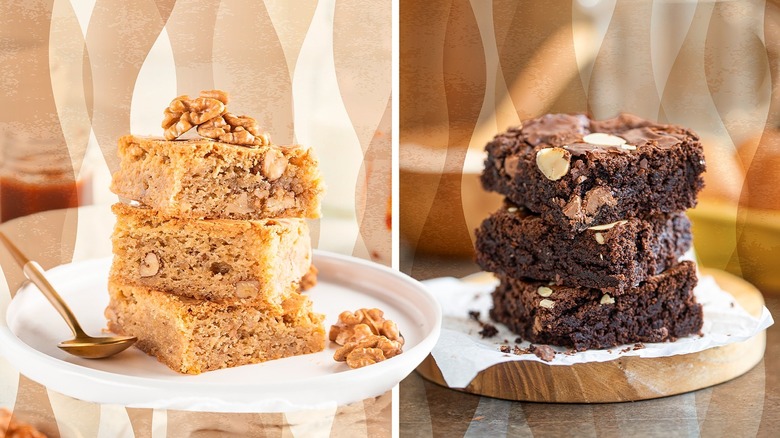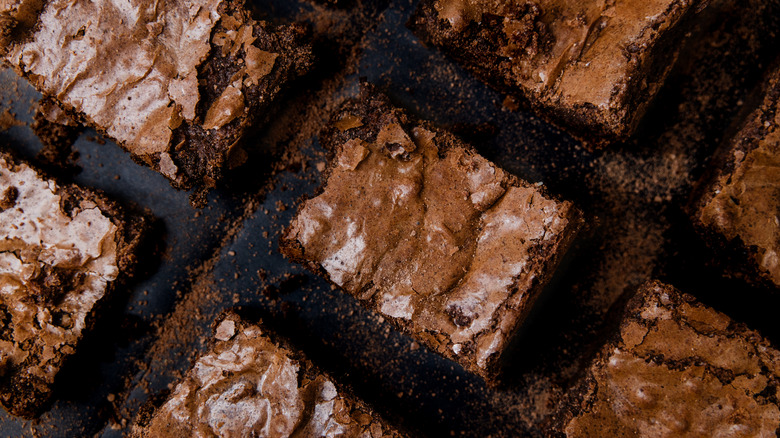Which Came First: The Blondie Or The Brownie? It's Complicated
Which came first, the blondie or the brownie? That's not just complicated — it might be a bit of a trick question. Let's start with the brownie. The most widely touted theory places its invention in Chicago during the late 19th century — specifically, in the kitchen of the Palmer House, a downtown hotel that wealthy industrialist Potter Palmer had given as a wedding gift to his wife, Bertha. In 1893, with Chicago set to host the World's Columbian Exposition (aka the World's Fair), Bertha Palmer asked her chefs to prepare a special treat that could fit easily into boxed lunches. What they came up with was a fudgy, cake-like chocolate dessert studded with walnuts and glazed with apricot preserves.
In other words, it was something very closely resembling what, today, we would call a brownie. (Still in business, the Palmer House now promotes itself as the birthplace of the brownie.) The only hitch: Palmer's chefs never called it that by that name or as far as we know, any other. It was just a rich, chocolatey cake-like bar.
Remember how we said it was complicated? Only three years later, a dessert called a "brownie" appeared in "The Boston Cooking-School Cook Book," the groundbreaking 1896 volume by Fannie Farmer. The only hitch? Farmer's "brownie" contained no chocolate. However, it did have butter, sugar, molasses, eggs, flour, and pecans. In other words, it closely resembled what we now call a "blondie." (Here's more on the modern-day difference between blondies and brownies.)
How the brownie and the blondie went their separate ways
If there's ambiguity surrounding the creation of brownies and blondies, we know that the period around the turn of the 20th century was generally important for the evolution of dessert culture in the U.S. Chocolate, once an exotic, upper-class treat, was growing in popularity among the masses. (It was also at the 1893 Chicago World's Fair that a Boston merchant debuted the first American-made chocolate bars.)
Following the Palmer House's chocolatey creation and Farmer's publication of a "brownie" recipe, these separate strands began to converge. The first published advertisement for chocolate brownies appeared in 1898, and the first cookbook recipe showed up the following year. By 1906 and the publication of an updated version of her cookbook, even Fannie Farmer was adding chocolate to her brownies. (Now, of course, we're blessed to live in a time of plentiful brownie recipes. Chocolate brownies, that is.)
In all of this, we're missing a key element: Where'd the "blondie" come from? That remains something of a mystery, but by the mid-20th century, we do know that a treat called "blond brownies" — essentially, brownies made with molasses — existed. At a certain point, perhaps, that was shortened simply to "blondies." Yet, with its earlier and better-documented origins, we can say with some confidence that the brownie came first — even if in name only.

